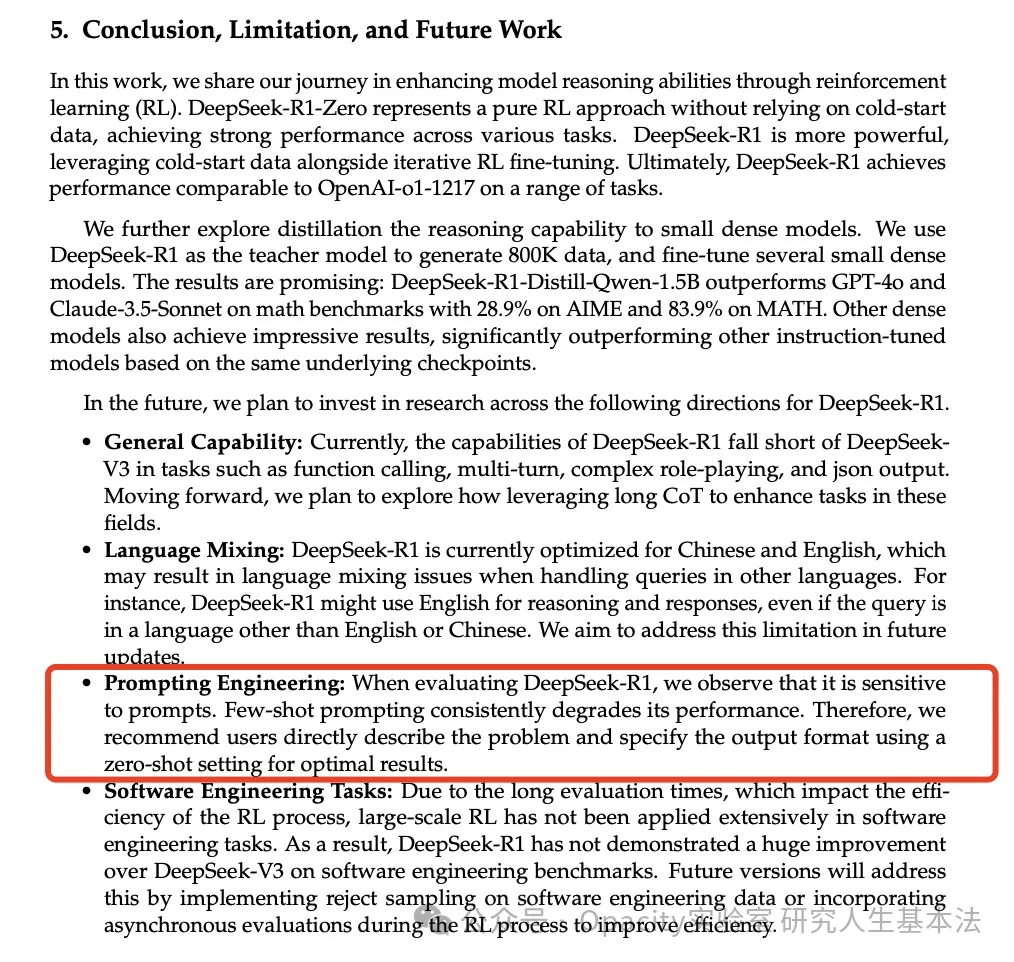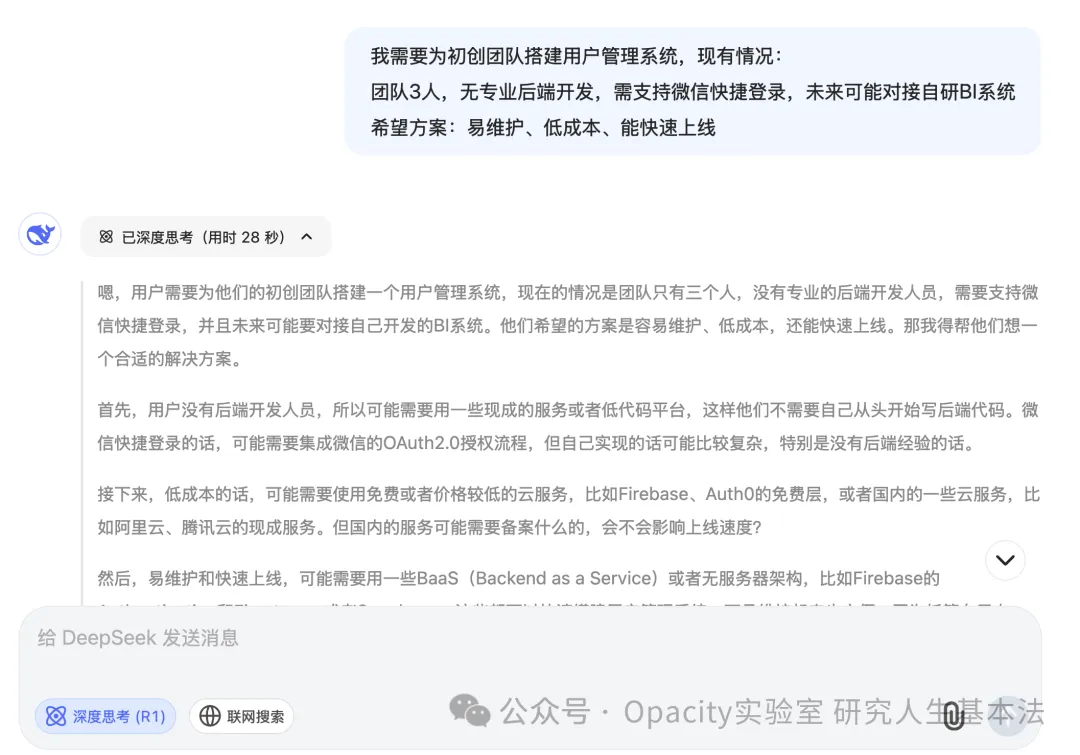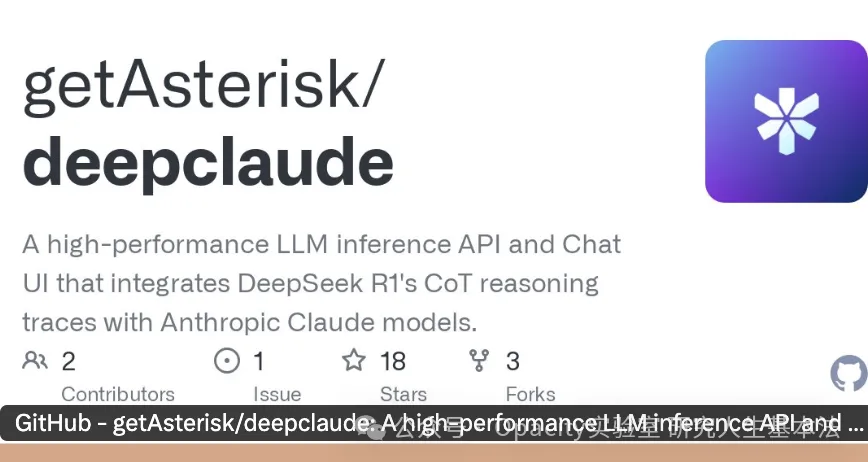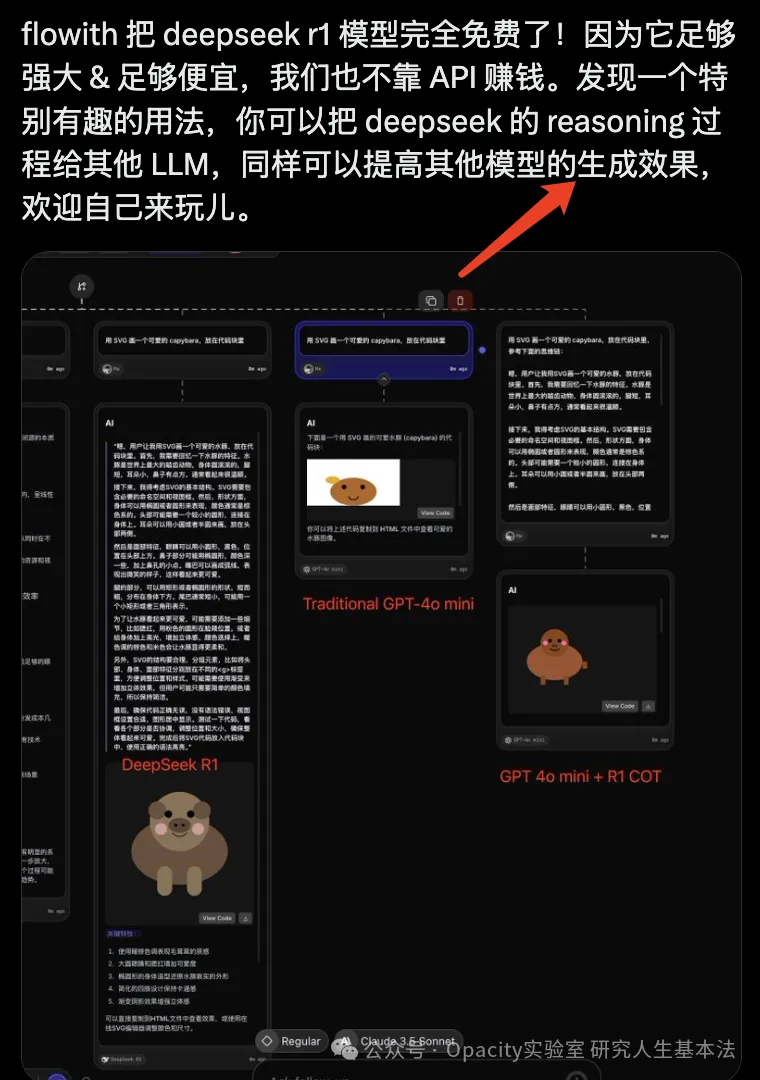Look closely, this is the correct way to use DeepSeek! Stop writing traditional prompts 2025-01-27
Why Your Prompt for Inference Models Needs a Complete Overhaul?
1. The Misunderstood Inference Large Model
Recently, an interesting phenomenon has been observed in the tech community: a large number of users are still testing DeepSeek with traditional prompt templates, concluding that the "results are mediocre" and hastily giving up. This misalignment is like fueling a sports car with diesel—it's not that the engine is bad, but rather that you are not using the right fuel!

The original paper on DeepSeek also mentions that the model should be allowed to think for itself as much as possible without providing specific operational steps. (If you need the English version of the paper, you can send "paper" in the background to obtain it.)
The current AI field is undergoing a paradigm shift from "instruction executors" to "thinking collaborators." OpenAI's o1 model has already shown signs of this, and DeepSeek's breakthrough lies in popularizing this capability. According to our tests, when the correct interaction method is used, DeepSeek's performance in solving complex problems improves by 47% compared to traditional models, while inference costs decrease by 83%.
2. Instruction-Based vs. Inference-Based: The Fundamental Differences in Interaction Methods
Traditional Instruction-Based Models (e.g., GPT-3.5)
-
• Mechanical Executors: Require complete flowchart-like instructions
-
• Template Dependency: Highly sensitive to prompt structure
-
• Deterministic Output: Results are predictable but lack creativity
-
• Typical Interaction:
You are a senior architect, please implement in Python: 1. Build a RESTful API using FastAPI 2. Integrate JWT authentication 3. Add Swagger documentation Requirements: Code must comply with PEP8 and include unit tests
Next-Generation Inference Models (e.g., DeepSeek)
-
• Strategic Thinkers: Capable of problem decomposition and path planning
-
• Context Understanding: Can capture implicit needs and deep intentions
-
• Dynamic Adjustment: Continuously optimizes solutions based on feedback
-
• Correct Approach:
I need to build a user management system for a startup team, current situation: - Team of 3, no professional backend developer - Needs to support WeChat quick login - May need to interface with a self-developed BI system in the future Hope for a solution: easy to maintain, low cost, can be quickly launched

3. Technical Principles Revealed: Why Traditional Prompts Are No Longer Applicable
The architectural innovation of DeepSeek lies in its dual-channel reasoning engine:
-
1. System One (Intuitive Thinking): Fast pattern matching, handling routine problems
-
2. System Two (Analytical Thinking): Activates deep reasoning to solve complex tasks
When users employ templated prompts, the model defaults to System One processing, which is the fundamental reason for mediocre output. By constructing "thinking triggers," System Two can be forcibly activated:
Excellent Case Comparison:
[Traditional Method] Analyze Tesla's Q4 2023 financial report, including: - Revenue composition - R&D investment - Performance in the Chinese market Requirements: Cite official financial report data, compare with the same period in 2022 [Thinking Model] I need to explain to the board why we should continue investing in Tesla, even though Q4 revenue has increased but the stock price has dropped. I need to help conservative board members understand: short-term fluctuations do not affect long-term technological layout, especially the potential value in AI and robotics.
4. Practical Guide: Building Effective Thinking Models in 5 Dimensions
- 1. Goal Visualization Principle
-
• ❌ "Write an industry report"
-
• ✅ "Assume you are an investor encountering this field for the first time, how would you understand the essence of the industry in 10 minutes?"
- 2. Explicit Constraints
-
• ❌ "Analyze the market competition landscape"
-
• ✅ "The team plans to enter the market with 2 million in startup funds and needs to avoid direct competition with giants."
- 3. Cognitive Bias Pre-setting
-
• ❌ "List technological advantages"
-
• ✅ "Customers believe traditional solutions are more reliable; how to prove that the new technology is actually superior in stability?"
- 4. Multi-Perspective Validation
-
• ❌ "Predict development trends"
-
• ✅ "If viewed from the perspectives of regulators, entrepreneurs, and users, what different opportunities would be seen?"
- 5. Dynamic Evolution Mechanism
-
• ❌ "Provide a solution"
-
• ✅ "When situation X occurs, how should the original plan be adjusted? What if parameter Y changes beyond the threshold?"
5. Industry Application Revolution: The Infinite Possibilities of Inference Models
When price is no longer a barrier, inference models are reshaping industries:
- 1. Virtual Think Tank for Product Managers
-
• Original requirement: "Design a membership system for a fitness app"
-
• Upgraded prompt: "How can we ensure that free users willingly purchase an annual membership after using it for 3 months? Consider the key points of user churn and conversion psychology."
- 2. Cognitive Upgrade in Educational Tutoring
-
• Traditional method: "Analyze the triangle function formula"
-
• Thinking model: "Students think the triangle function is useless; how can we spark interest in learning through practical applications in mobile games?"
- 3. Decision Simulation in Strategic Consulting
-
• Old model: "Analyze the new energy vehicle market"
-
• New paradigm: "Assume you are in BYD's strategy department; how would you respond to Tesla's sudden 15% price cut? Consider multiple factors such as supply chain, brand positioning, and capital market reactions."
6. Future Outlook: The New Era of Reasoning as a Service (RaaS)
As models like DeepSeek drop in price, we are entering the era of "thinking as a service." When the cost of complex reasoning per instance is lower than that of human experts, we will see the emergence of:
-
1. Real-time Decision Support Systems: Generating alternative solutions in milliseconds
-
2. Dynamic Knowledge Graph Construction: Autonomously updating industry cognitive frameworks
-
3. Cognitive Enhancement Workflows: Deep thinking cycles of human-machine collaboration
On GitHub, there are already many people combining DeepSeek with models like Claude.
Combining the deep reasoning capabilities of DeepSeek R1 with the creativity and code generation abilities of Claude
Dual Model Collaboration
· DeepSeek R1: Good at chain reasoning (CoT), capable of self-correction and analyzing complex problems
· Claude 3.5 Sonnet: Strong in code generation and creative dialogue
· Both work together: R1 is responsible for reasoning and planning, while Claude generates the final result, achieving a "1+1>2" effect
Applicable Scenarios
· Tasks requiring complex reasoning + code generation (e.g., programming problem-solving)
· Real-time dialogue applications (e.g., intelligent customer service, educational assistants)
· Enterprise-level scenarios requiring high privacy protection


Next time you prepare to input a prompt, consider asking yourself: Am I directing a typist, or am I stimulating a strategic advisor? The answer will determine whether you receive mechanically repetitive text or valuable insights.
(If you need the English version of the DeepSeek paper, you can send "paper" in the background to obtain it.)
